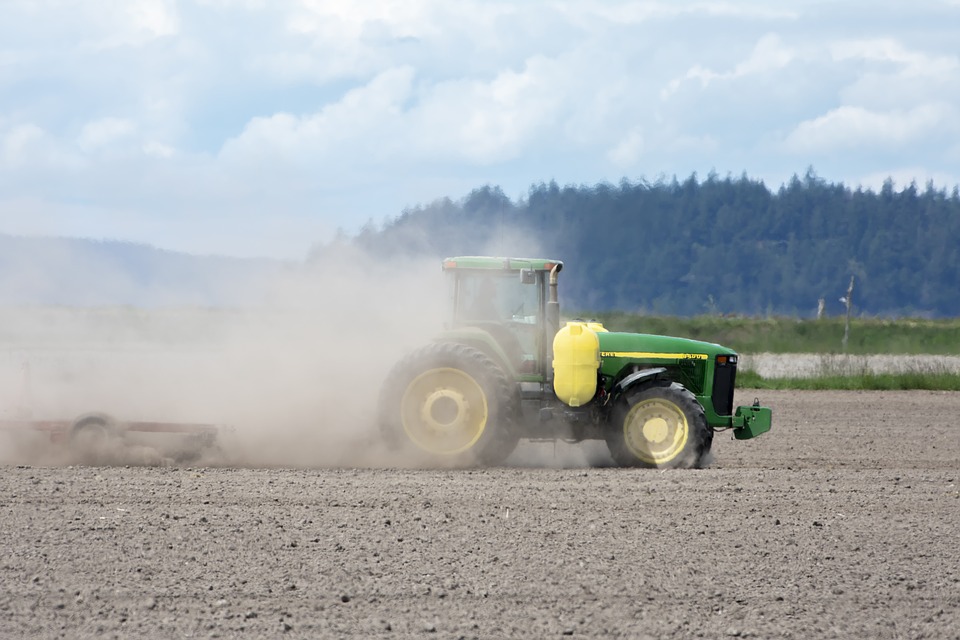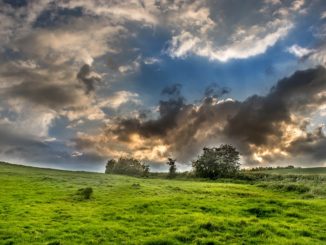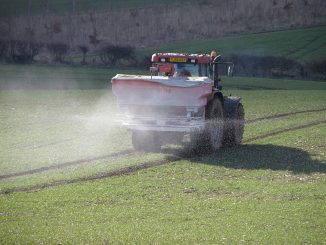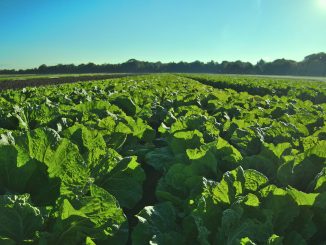
Business as usual in agriculture will see no more than a 10% reduction in greenhouse gas emissions by 2050 – but there are other approaches. The most ambitious of these could see up to an 81% reduction –with targets and taxes – a report finds.
Steve Gillman
A report from the Institute for European Environmental Policy (IEEP), an environmental think tank, says EU agriculture will struggle to balance the greenhouse gases it emits with the amount it can remove from the atmosphere – unless it adopts emission targets and taxes.
Agriculture and other rural land uses have the ability to both emit and absorb greenhouse gases. In theory, this could mean that adopting the right farming practices could neutralise the sector’s contribution to climate change. Governments see this as an opportunity to align their agricultural industries with the Paris Agreement’s goal of limiting global warming to 1.5C, but if the EU have similar hopes a recent report by the IEEP offers a cold dose of reality.
In Net Zero Emissions by 2050 – how to get there, the think tank analysed different scenarios that combine reduction and absorption actions to determine what steps the EU’s farming sector could take to make a ‘net zero’ sector. In their least ambitious approach (scenario 1) they found that focusing on reduction through improving efficiencies of agriculture production, basically a business-as-usual approach, would see just a ~10% drop in emissions by 2050. If this was combined with a consumer and farming shift to less carbon intensive products and a huge conversion of land to forests (scenario 4), EU agriculture could hope for ~81% emission reduction by 2050 compared. Even with this most ambitious scenario, with its attendant major changes in production, consumption and land use, neto zero is still 19% away, with the methods in this report untested for net zero.
Summary of scenarios
- Scenario 1: Focus on improving production efficiency, some land used as temporary grassland and a smaller share converted to forests = ~10% reduction by 2050
- Scenario 2: Lower production levels of less carbon intensive products with free-up land used mainly as pasture = ~33% reduction by 2050
- Scenario 3: Improved production efficiency, lower production levels and a shift toward less carbon intensive products with freed-up land used mainly as pasture = ~46% reduction by 2050
- Scenario 4: Improved production efficiency, lower production levels and a shift toward less carbon intensive products with freed-up land used mainly as forest = ~81% reduction by 2050
In scenario 4, IEEP envision that the EU becomes completely self-sufficient in food and meat consumption, which would end any export-driven production and the emissions this creates. They also predict strong improvements in the efficiency of EU agriculture production that would see farming concentrated onto less land and free up space for forests to be planted, which would absorb greenhouse gases from the atmosphere as they grow.
IEEP_report: Net Zero Emissions by 2050 – how to get there.
This is all accompanied with a ~75% decrease in meat consumption and an ‘extreme concentration’ of feedlot systems and a 40% increase in feed conversion from animals, all of which would see the production of animal products much more efficient than it is now.
Even with such ambitious changes, in both how the EU produces and consumes food, a hefty emissions gap of ~19% remains. This highlights the scale of the challenge that EU agriculture faces to become carbon neutral – leaving aside the broader sustainability considerations inherent in a concentration of feedlots and such a massive increase in feed efficiency.
To help ensure there are strong emission reductions, IEEP recommends taking key actions taken both in and outside the agriculture sector. Within agriculture, they suggest the adoption of the sector’s own specific emission reduction targets which would help orientate action towards a shared goal. The think tank is adding weight to their recent criticisms that the European Commission’s proposal for the next CAP prevents such important targets.
For the focus outside agriculture, IEEP suggest to ‘internalise the climate impacts in the production of food commodities’ as a way to promote more sustainable consumption amongst the public. This means making sustainable products cheaper or carbon intensive products more expensive. The report leaves this part open to interpretation, but it could be translated into removing subsidies or putting a tax on greenhouse gas heavy items like meat and dairy.
Saying that, the report does not single out the livestock sector as the agriculture climate villain, instead it offers an overall vision of what it may look like in a more sustainable future. For instance, with more agricultural land freed up for pasture it could allow for livestock farmers to shift their focus to a more grass-fed system and become less dependent on unsustainable imported animal feed. Although, this is all within the context of a significant decrease in the consumption of meat.
Other key net-zero recommendations for 2050
- Exploit agriculture’s unique ability to be a carbon sink
- Greater support for research and innovation of climate-smart agriculture solutions
- Include farmers in developing climate action plans
- Utilise the development of the circular-bioeconomy to drive sustainability
- Encourage a change in consumption
- Ensure climate-coherence in policies across sectors like environment, health and animal welfare
IEEP acknowledge some of their assumed actions would certainly result in economic trade-offs and farmers’ income would need to be adequately supported to ensure livelihoods are not jeopardised. The financial solution they recommend is to reward farmers for providing environmental and climate goods for the public.
Overall, the report paints an important picture because EU agriculture is expected to only make modest reductions by 2050. The actions suggested by IEEP highlight where big savings could be made and could help point policy makers in a more ambitious direction. To ensure clarity ‘on what actions should be taken and by whom’ the IEEP suggest following an emission hierarchy. They recommend first to avoid emissions where possible, then reduce emissions where they cannot be avoided and finally recover emissions where possible.
But despite the greenhouse gas challenge facing agriculture, an emission focus is arguable the wrong target to aim for because it does not necessarily address other issues like biodiversity, water or soil. There would be more value in these type of studies if they reflected all the issues being faced in the food system.
IEEP acknowledge that a net-zero approach ‘focuses solely on agriculture’s contribution to the mitigation of climate change’ and some actions would indeed have negative environmental, social and economic consequences. Although they point out that ‘ensuring climate action in agriculture is itself sustainable requires coherence’ between other policies areas like environment, health, trade and food safety.
The report was funded by the European Climate Foundation as a basis for discussions amongst stakeholders and policy makers. In that sense, it appears more of an exercise to illuminate where and by how much emissions could be reduced and to what degree of ambitious is required, rather than dictate specific actions. IEEP’s less ambitious scenarios still offer high reduction potential which could also help policy makers improve the sustainability of EU’s agriculture, but the question is how far they will go and if they can fill any emissions gap leftover by action in other sectors.





